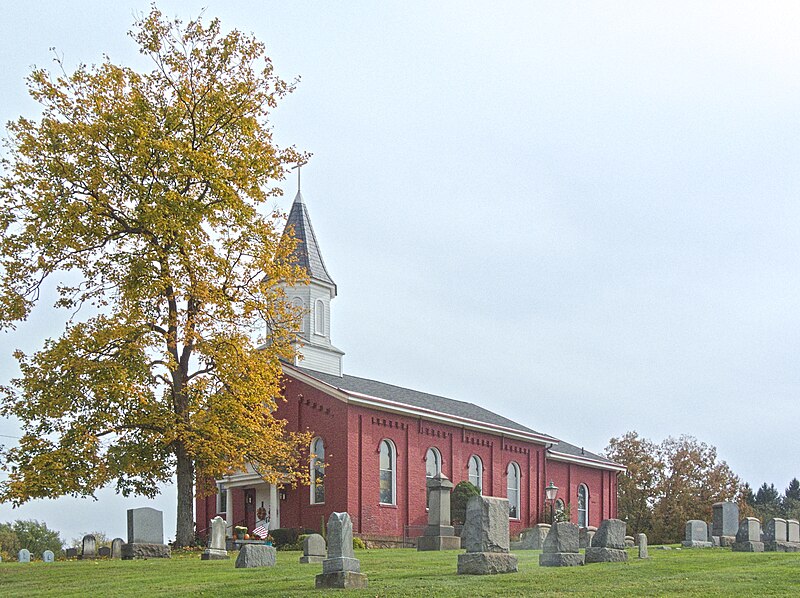
This little country church is now surrounded by suburbs, though there are still farms nearby. The date stone on the front of the building tells us it was built in 1868.








Originally the First United Presbyterian Church, this congregation merged with the Bellefield Presbyterian Church down the street, which sold its building (of which only the tower remains) and moved here, with the compensation that this church was renamed Bellefield Presbyterian. The building, designed by William Boyd and built in 1896, is festooned with a riot of carved Romanesque ornaments.
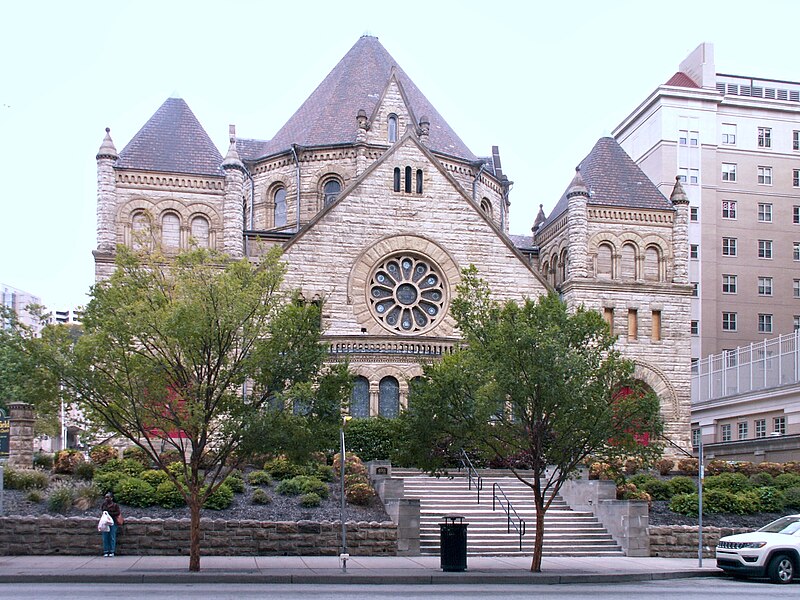
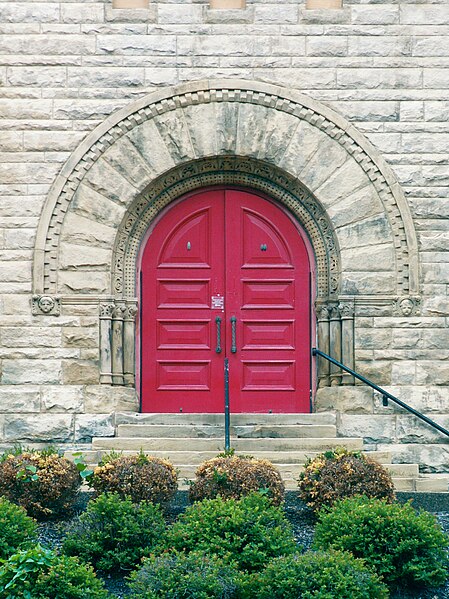
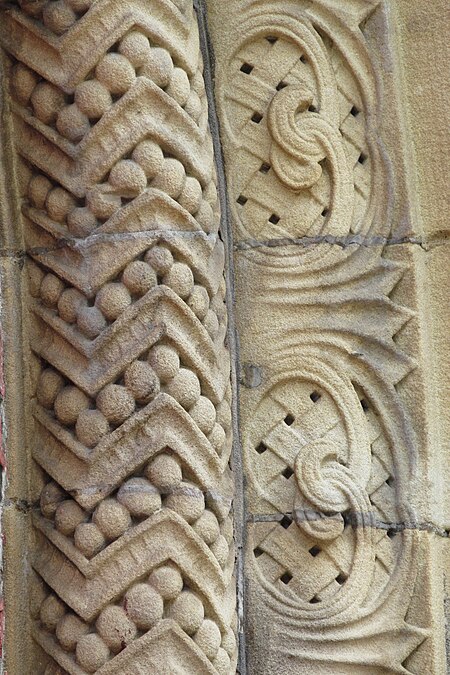
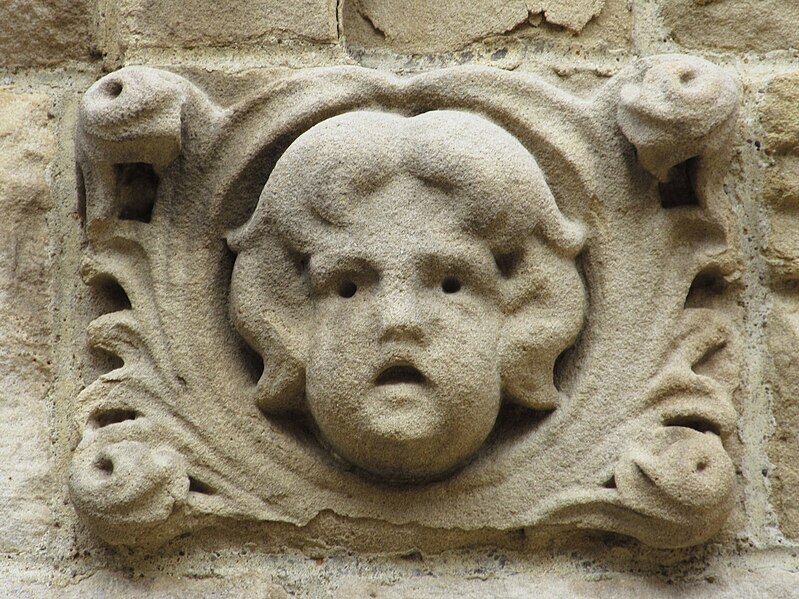
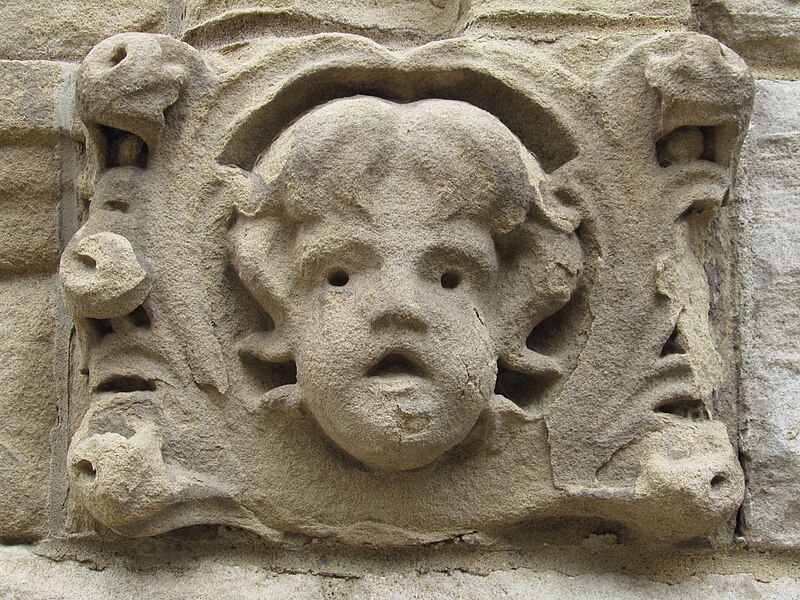


Each one of these cherubs has a different face and different ornamental carving surrounding it.
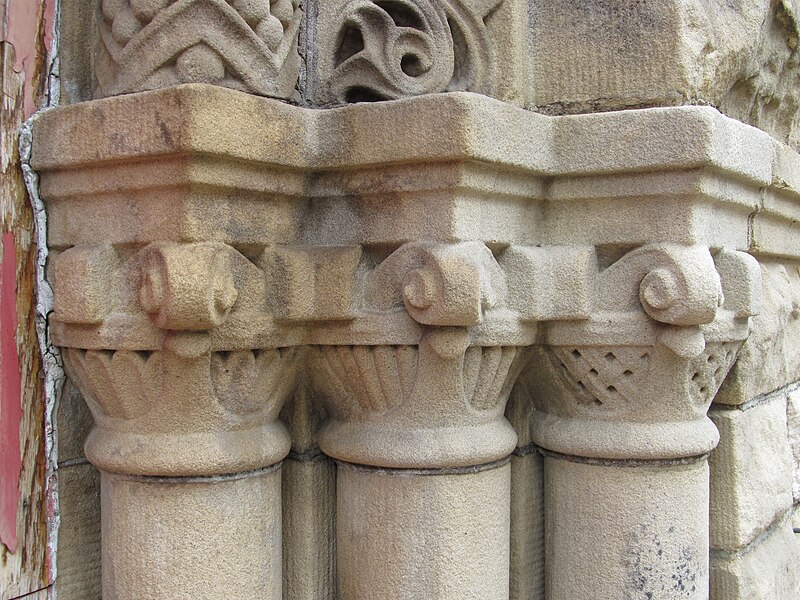

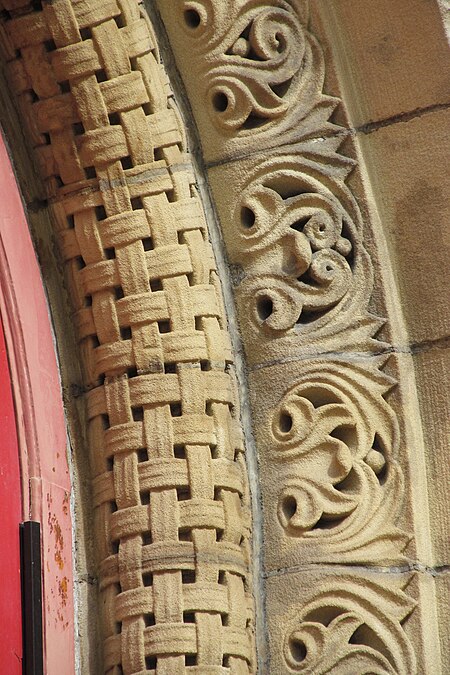

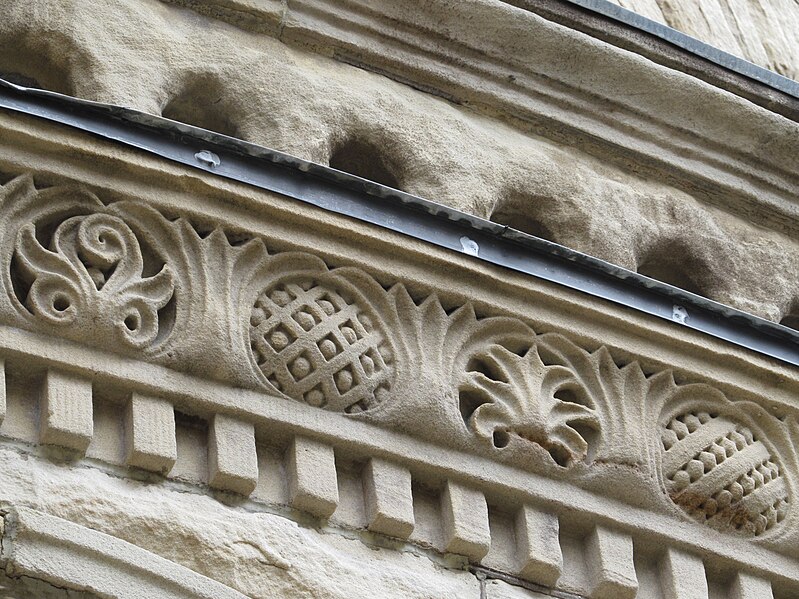


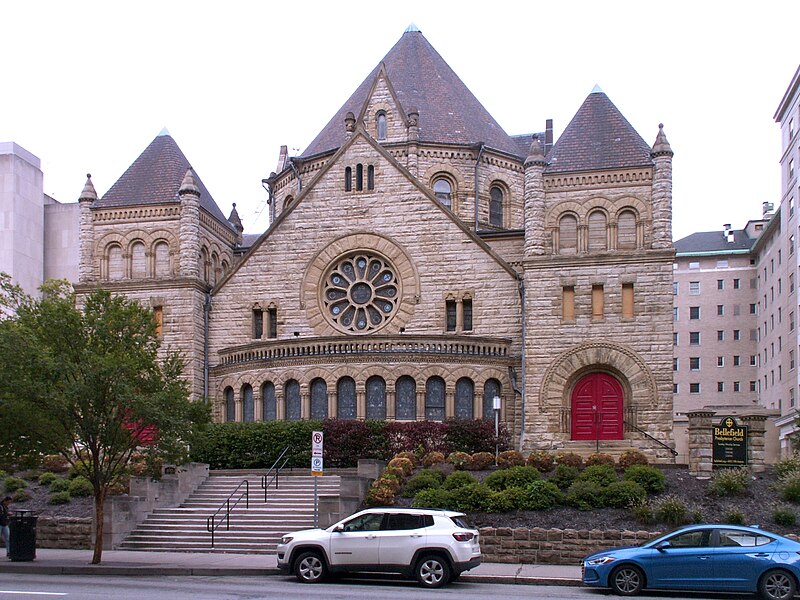
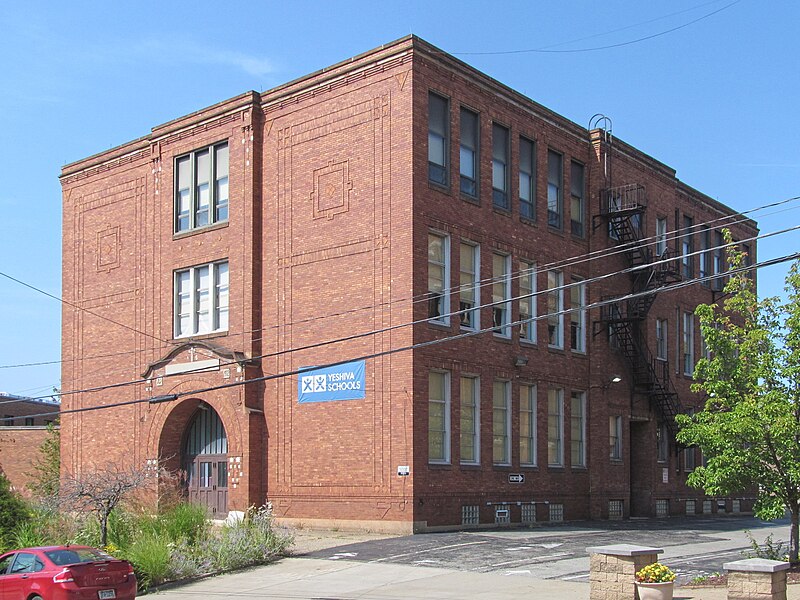
A. F. Link designed this Romanesque school in 1912, a little more than a decade before he designed the magnificent church beside it. This design already shows Link’s trademark habit of abstracting and modernizing historic forms: here he combines a hint of Romanesque with some very Jugendstil abstract patterns in the brickwork.
Fortunately the building has been sold to Yeshiva Schools, so it will not be abandoned to rot the way so many Catholic schools have been.

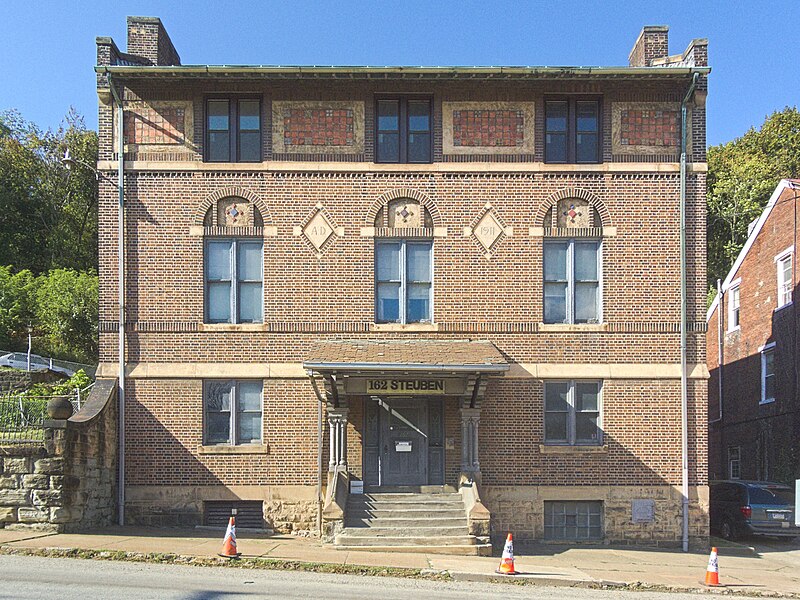
Our great ecclesiastical architect John T. Comès designed a fine church for St. Martin’s parish in the West End, but the church was demolished long ago. The rectory, however, remains, and it is a remarkable piece of work itself. We might call it Romanesque, or Art Nouveau, or Arts-and-Crafts, or perhaps even Rundbogenstil. Father Pitt is tempted, however, to call it Pre-Raphaelite. It reminds him of Pre-Raphaelite paintings; we can imagine it as a backdrop for figures by Burne-Jones.



The rich colors and deliberately handmade look of these ornamental tiles add considerably to the effect of the façade.




For most of the history of the South Side, this corner at 24th and Carson was the gateway to the long Carson Street retail district. Further out there were a few shops and (especially) bars, but the looming mass of the steel mill dominated the streetscape. Now, of course, the SouthSide Works (spelled with internal capital, which is not old Pa Pitt’s fault) development that replaced the mill has extended the retail district by several more blocks, but this building still marks an obvious break between the new and the old.
The rounded corner is distinctive and emphasizes the building’s function as a gateway. The proper inset entrance not only makes the storefront look characteristically Victorian, but also still fulfills its purpose of not hitting pedestrians in the face with a swinging door—a purpose we have unaccountably forgotten in our modern storefronts. One would think a few lawsuits by pedestrians with broken noses would establish a design precedent, but apparently that has not happened.


Designed by A. F. Link, this Romanesque church was begun in 1923 and opened in 1925. The style is transitional: it uses traditional Romanesque elements, but it is already veering toward the Art Deco modernist interpretation of those elements that would become common in the 1930s through the 1950s.

The cross at the top of the (liturgical) west front sets the modernist tone for the decorations.



These abstract capitals continue the streamlined modernist theme, as do the three lunettes (Mary, Jesus, Joseph) on the west front:
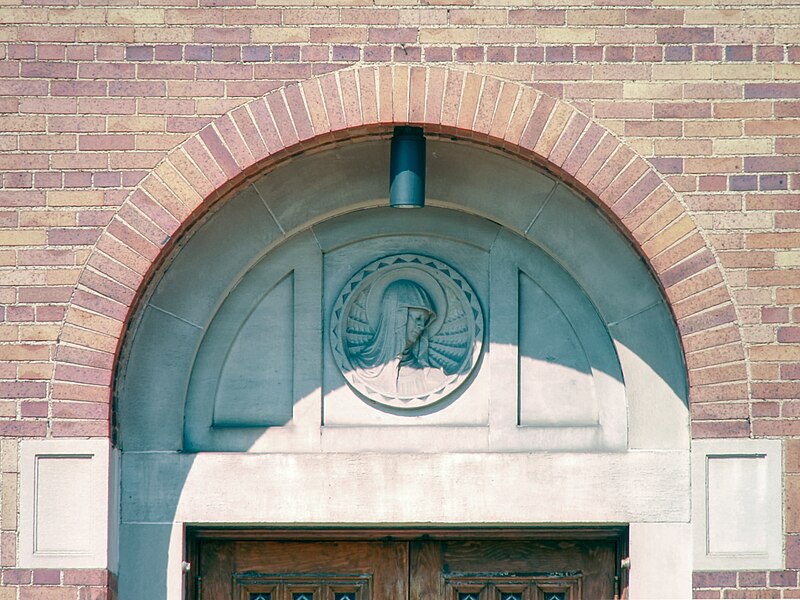

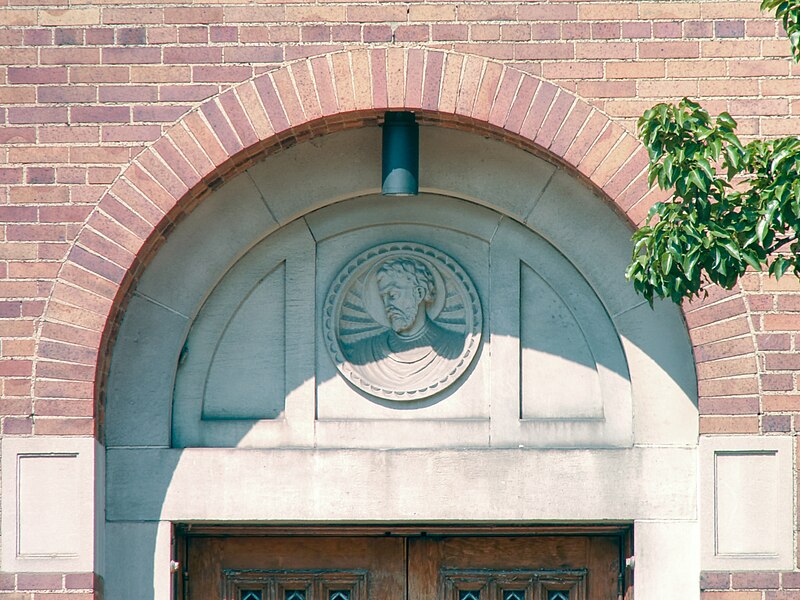

Though it is a complex design, the rose window echoes the streamlining of the capitals and other details.

In contrast to the Deco streamlining of the front, the side of the church, with its crenellations and complex brickwork, could almost pass for a middle-1800s church by Charles F. Bartberger. Yet the styles fit together; there is no dissonance between the different views of the church.
For those who are interested, here is a Pittsburgh Catholic article published March 27, 1924, that identifies many of the contractors and artists who worked on the church.
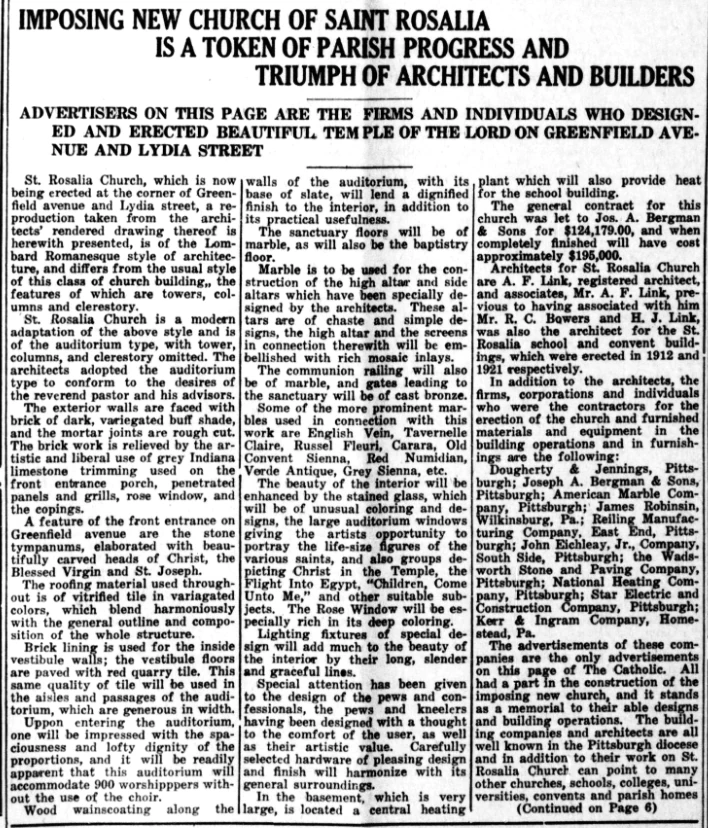

Although we don’t find it listed among his works, Father Pitt suspects that this school may have been designed by John T. Comès. The polychrome brickwork and crenellations remind us of some of his more famous churches, and the fact that the parish hired his disciple Leo McMullen to design the main church after Comès was dead may be suggestive. If anyone at the parish knows who designed this building, Father Pitt would greatly appreciate a comment.
Obviously the parish was getting ready for a festival when old Pa Pitt stopped by a few weeks ago.


John T. Comès was probably Pittsburgh’s most prolific architect of Catholic churches—a record made all the more remarkable by the fact that he died at the age of 49. His favorite style was Romanesque, and in the out-of-the-way back streets of Etna we find this masterpiece, built in 1914, that shows him at the peak of his creative power. It has all of Comès’ quirks. Unlike many other American architects who worked in the Romanesque style, he enthusiastically embraced the almost gaudy polychrome stripes and patterns typical of medieval Romanesque masterpieces. The bells in their cutout arches also seem like a thoroughly Comès detail.
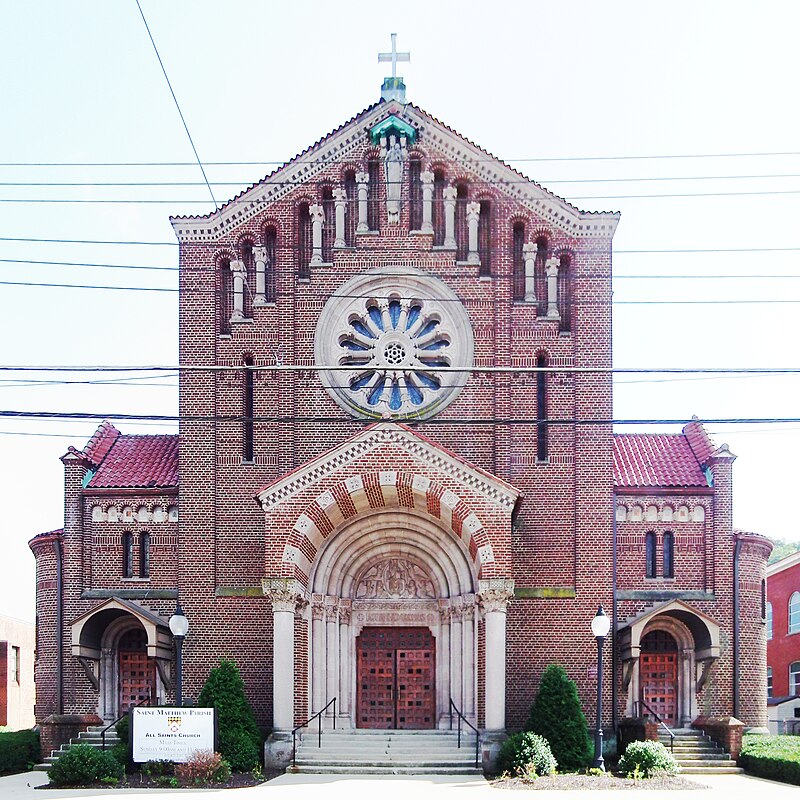
With the light from the wrong angle, this composite picture of the front was about the best old Pa Pitt could do.

Here is a little Arts-and-Crafts Romanesque church that had money at the wrong time. The modern addition (probably 1960s or early 1970s) is not sympathetic to the church behind it. The elaborate modernist window in the front probably replaced an earlier decorative window; perhaps the church had a fire. If a member of the congregation has any information, old Pa Pitt would be grateful for it.

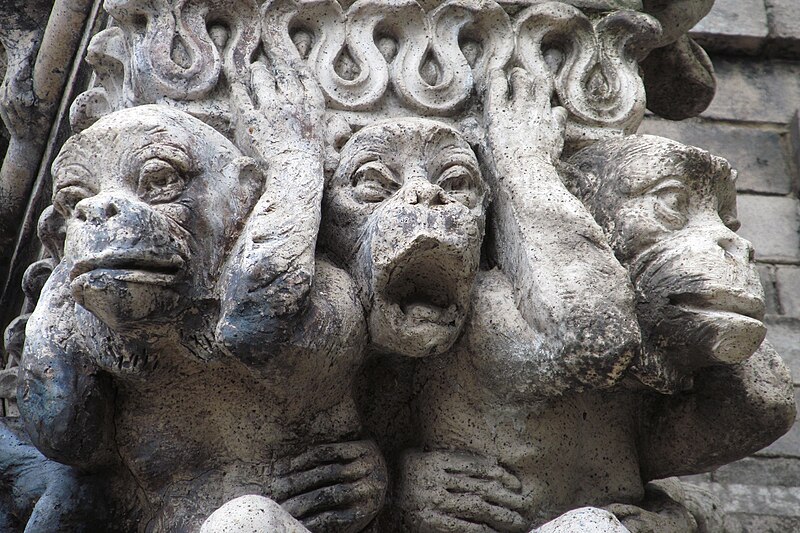
Ulysses L. Peoples was the architect of this school, which opened in 1902 and even then was something unique.
The building itself is a tasteful but not extraordinary example of Romanesque style with Renaissance overtones—something we might call Rundbogenstil, because we like to say the word “Rundbogenstil.” It is a little bedraggled-looking now, because it closed in 2005. The more modern addition (by the time it was added this was known as the Madison Elementary School) has been adapted for the Pittsburgh Playwrights Theatre Company, but nobody seems to know what to do with the original section.

A fine piece of work for a small school, like many another Romanesque school in Pittsburgh. But the carved decorations around the entrances are like nothing else in the city, or possibly on earth.

It seems as though the architect and the artist had conceived the curious notion that children should find school delightful, and that the entrance should convey the message that here is a place where we are going to have fun.
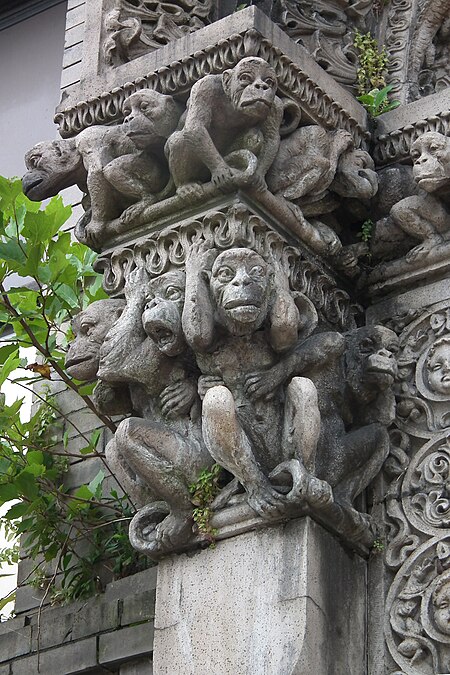

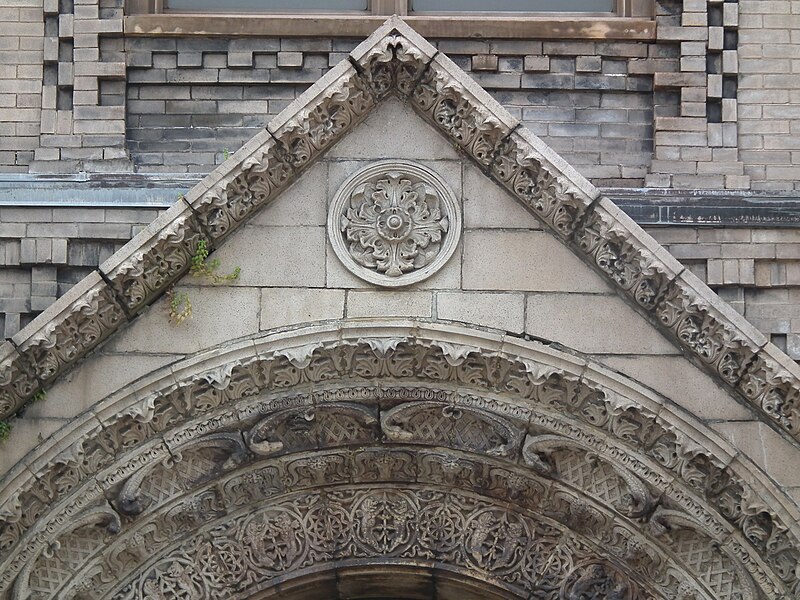









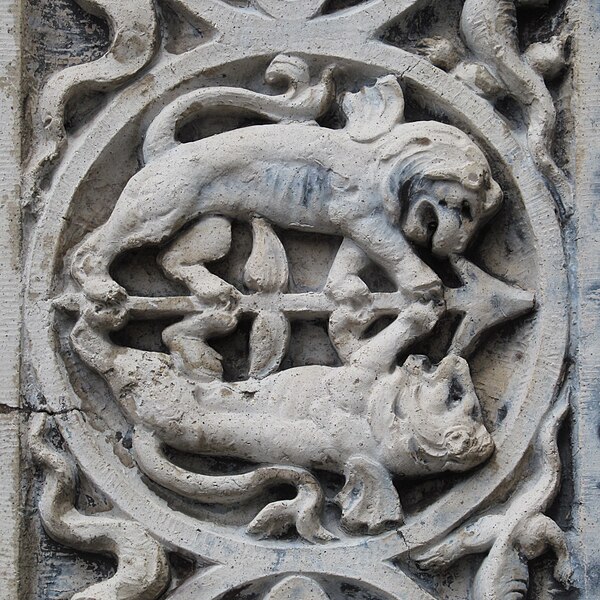
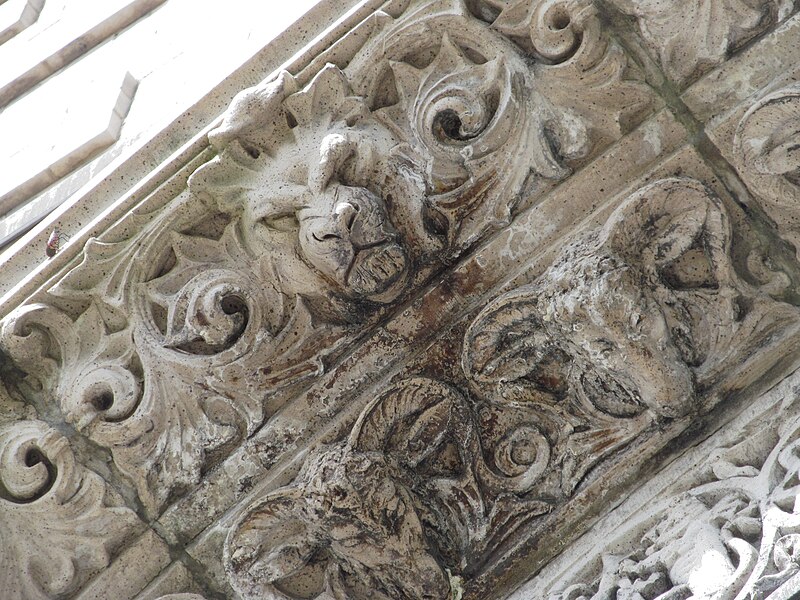


The side and rear of the building. The rear, facing an alley, is done in less expensive brick.


The later addition, from 1929, is by Pringle & Robling in quite a different style, a lightly Deco form of modernism.